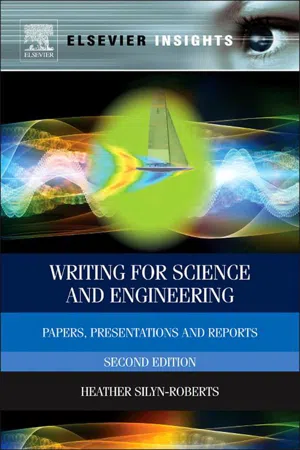
Writing for Science and Engineering
Papers, Presentations and Reports
- 208 pages
- English
- ePUB (mobile friendly)
- Available on iOS & Android
About This Book
Learning how to write clearly and concisely is an integral part of furthering your research career; however, doing so is not always easy. In this second edition, fully updated and revised, Dr. Silyn-Roberts explains in plain English the steps to writing abstracts, theses, journal papers, funding bids, literature reviews, and more. The book also examines preparing seminar and conference presentations. Written in a practical and easy to follow style specifically for postgraduate students in Engineering and Sciences, this book is essential in learning how to create powerful documents.
Writing for Science and Engineering will prove invaluable in all areas of research and writing due its clear, concise style. The practical advice contained within the pages alongside numerous examples to aid learning will make the preparation of documentation much easier for all students.
- Written in modular format, so you only need to access the relevant chapter
- Covers a wide range of document and presentation types
- Includes easy-to-understand rules to improve writing
Frequently asked questions
Information
Section 1
Document Structure. The Requirements for each Section
1
Structuring a Document
Using the Headings Skeleton
The Basic Skeleton of Section Headings for a Technical Document
TAIMRAD: The classic structure of an experimental report
When TAIMRAD Isn’t an appropriate structure for your document
Choosing a set of main headings

Choosing Section Headings: Building an Extended Skeleton
Steps to take
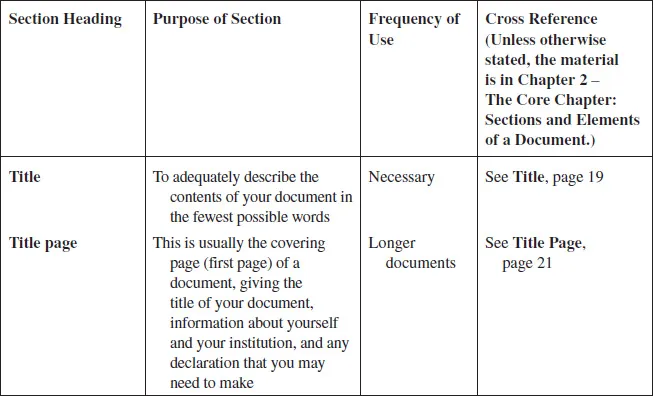
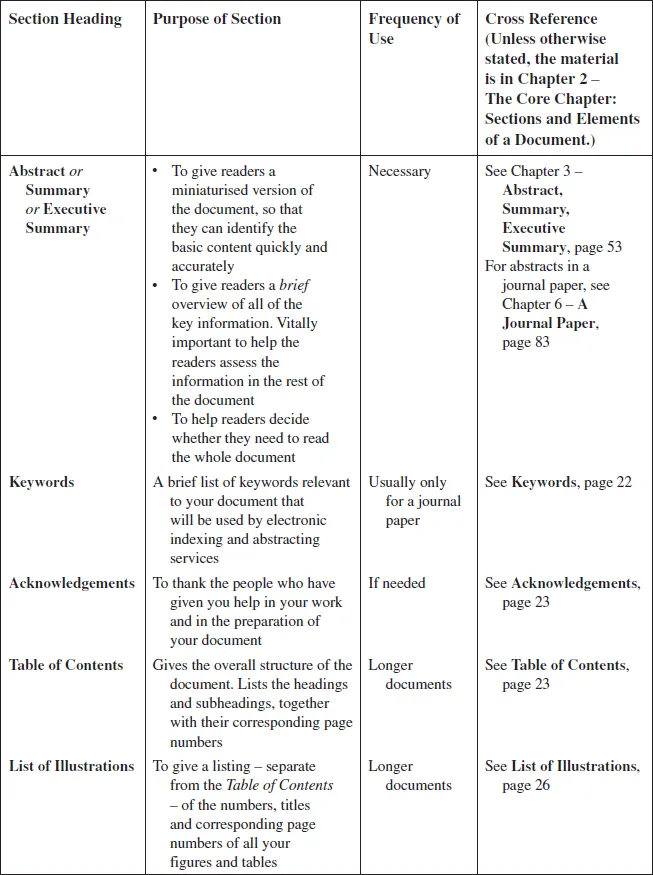
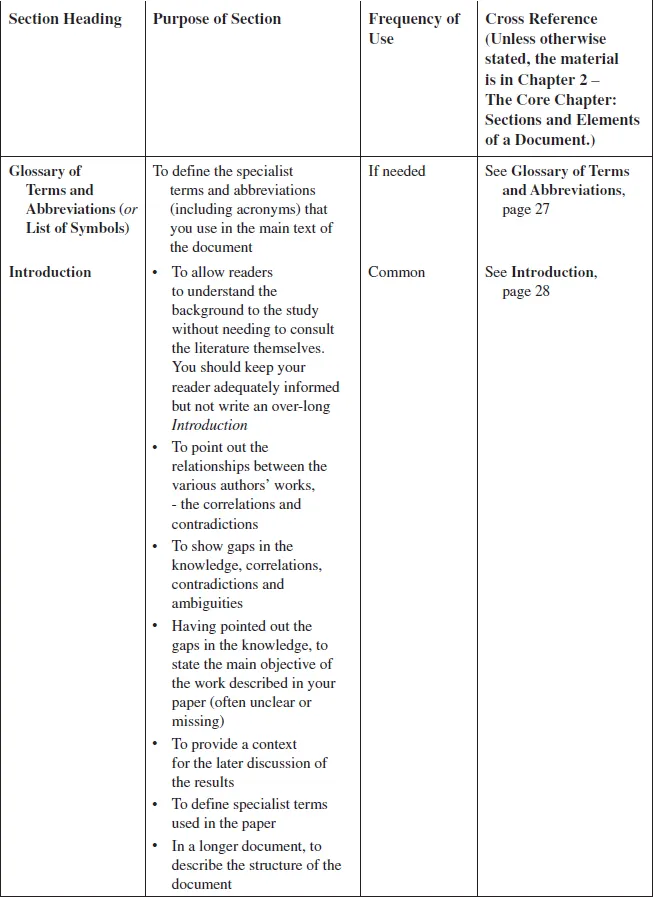
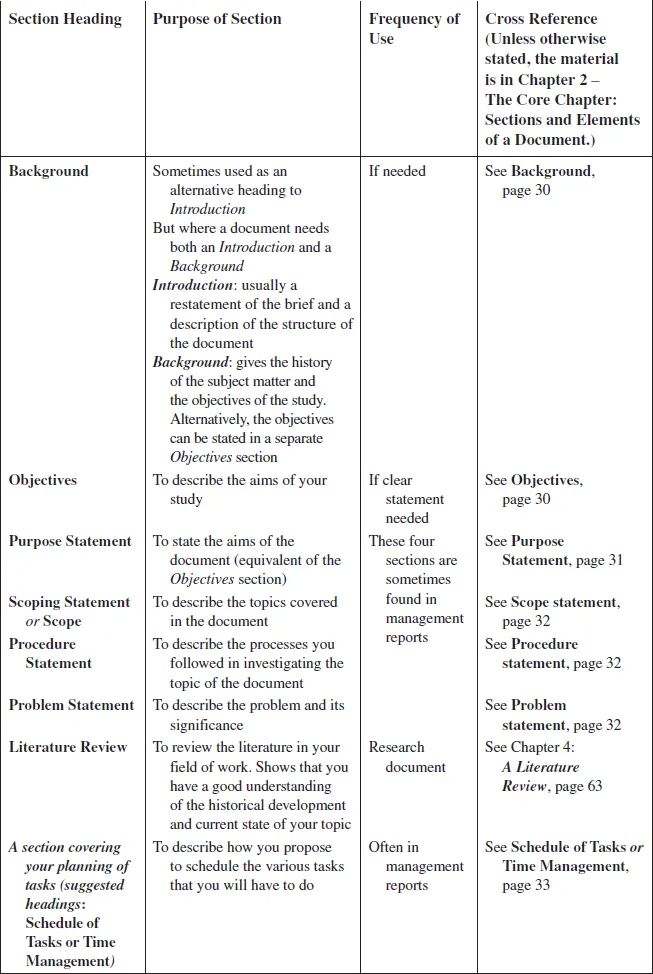
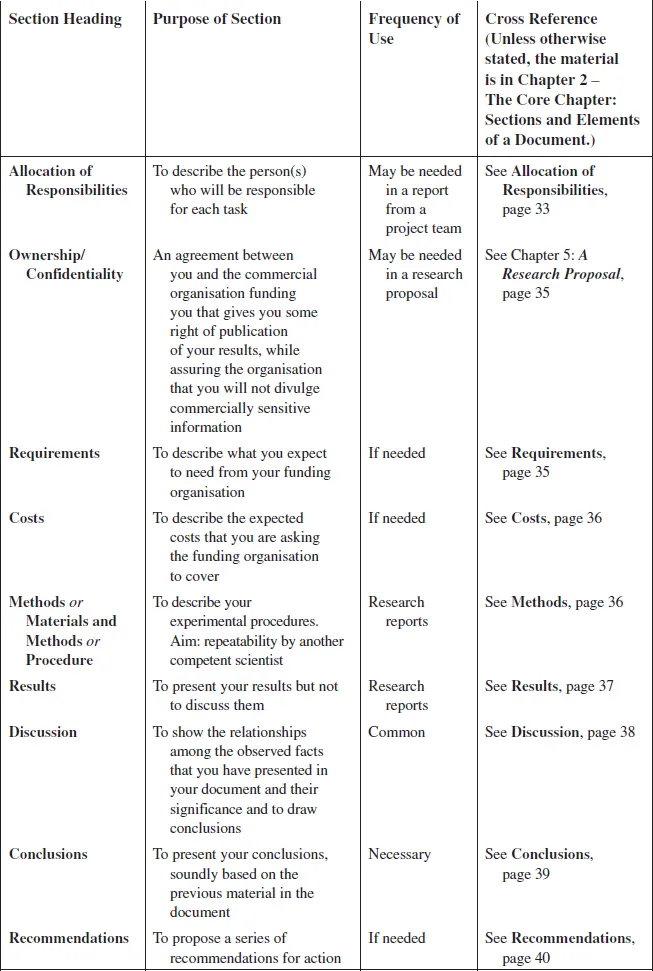

Table of contents
- Cover image
- Title page
- Table of Contents
- Copyright
- Introduction: How to Use This Book
- Section 1: Document Structure. The Requirements for each Section
- Section 2: Specific Types of Documents
- Section 3: Referencing, Editorial Conventions, Revising, Proofreading
- Section 4: Writing Style
- Section 5: Presenting Your Work Orally
- Appendix 1: SI Units and Their Abbreviations
- Appendix 2: The Parts of Speech; Tenses and Forms of the Verb
- Appendix 3: Recommended Scientific Style Manuals